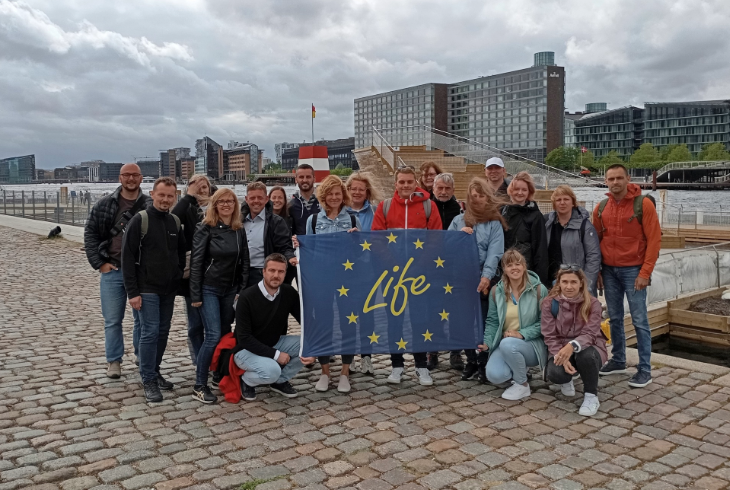

New
Copenhagen experience
27. 06. 2025
![]() Awareness
Awareness
In the last week of June, the Slovak Environmental Agency organized a study trip to Copenhagen to showcase examples of good practice in the field of sustainable mobility and energy. The trip was intended for representatives of local governments, with the aim of demonstrating how measures can be implemented to improve air quality. Among the participants were also representatives of the LIFE IP – Improvement of Air Quality project.

During the four days, participants had a packed program full of inspiration in air protection, sustainable mobility, energy, and public administration.
The study trip in Copenhagen began with morning lectures at the European Environment Agency (EEA). Colleagues from the EEA presented how they cooperate with member states, verify data, and prepare assessment reports. Currently, they are also working on updating the air quality index, which will reflect the new EU directive on ambient air quality and cleaner air for Europe. At the organization that unites Danish municipalities (similar to the Association of Towns and Communities of Slovakia), participants learned about the process of reducing the number of municipalities from the original 1,388 (in 1970) to the current 98 (in 2007). It was not easy, but the results confirm that it was the right decision. This was followed by measuring ultrafine particles in the streets of Copenhagen.
The next day of the study trip was used to the fullest by the participants. During the morning lectures, the measurements of ultrafine particles from the previous day were evaluated and compared with results from Slovakia, which were carried out in cooperation with the civic association CEPTA. Information was also provided by the City Hall about the impact of deteriorated air quality on residents’ health. In the afternoon, participants enjoyed Copenhagen from the saddle of a bicycle. Road safety, separate spaces for cars, cyclists, and pedestrians, high-quality infrastructure, and cycling in any weather are all commonplace in the Danish capital.
The following day of the study trip started with lectures focusing on local heating with solid fuels. The presentations compared heating devices, differences in pollutant emissions, and new technologies. In the afternoon, the program included a visit to a waste incineration plant that processes municipal waste from 18 cities (serving more than 1.2 million inhabitants). The heat produced during waste incineration is used for heating households, including hot water supply. One of the recipients is a regional hospital. Biogas is produced from kitchen and garden waste and serves as fuel.
Copenhagen impressed in many respects - functional public spaces for everyone, clean streets, and the contentment visible on residents’ faces - known as hygge. We believe that the knowledge gained will inspire measures to improve air quality in Slovak cities and municipalities.











